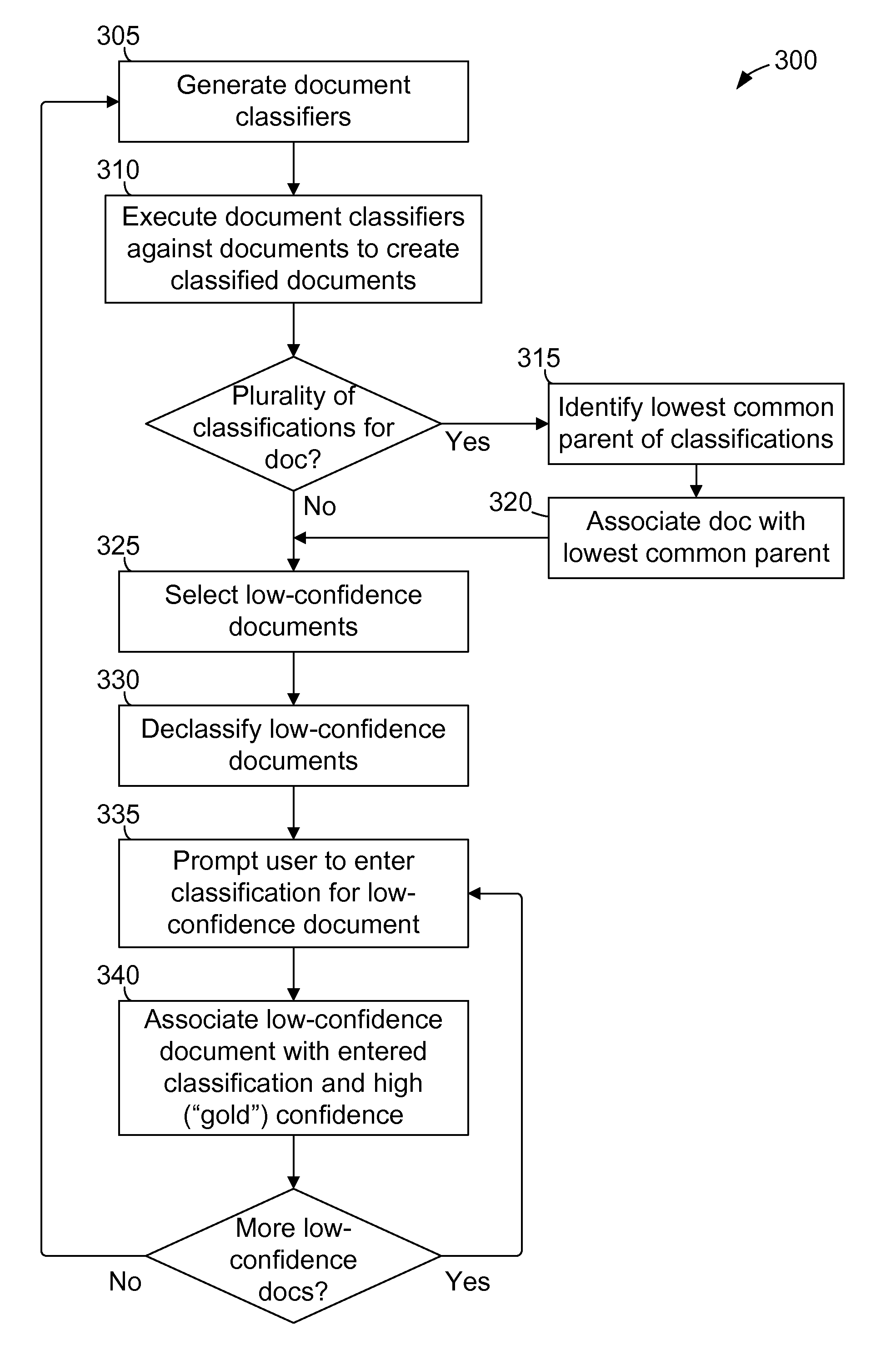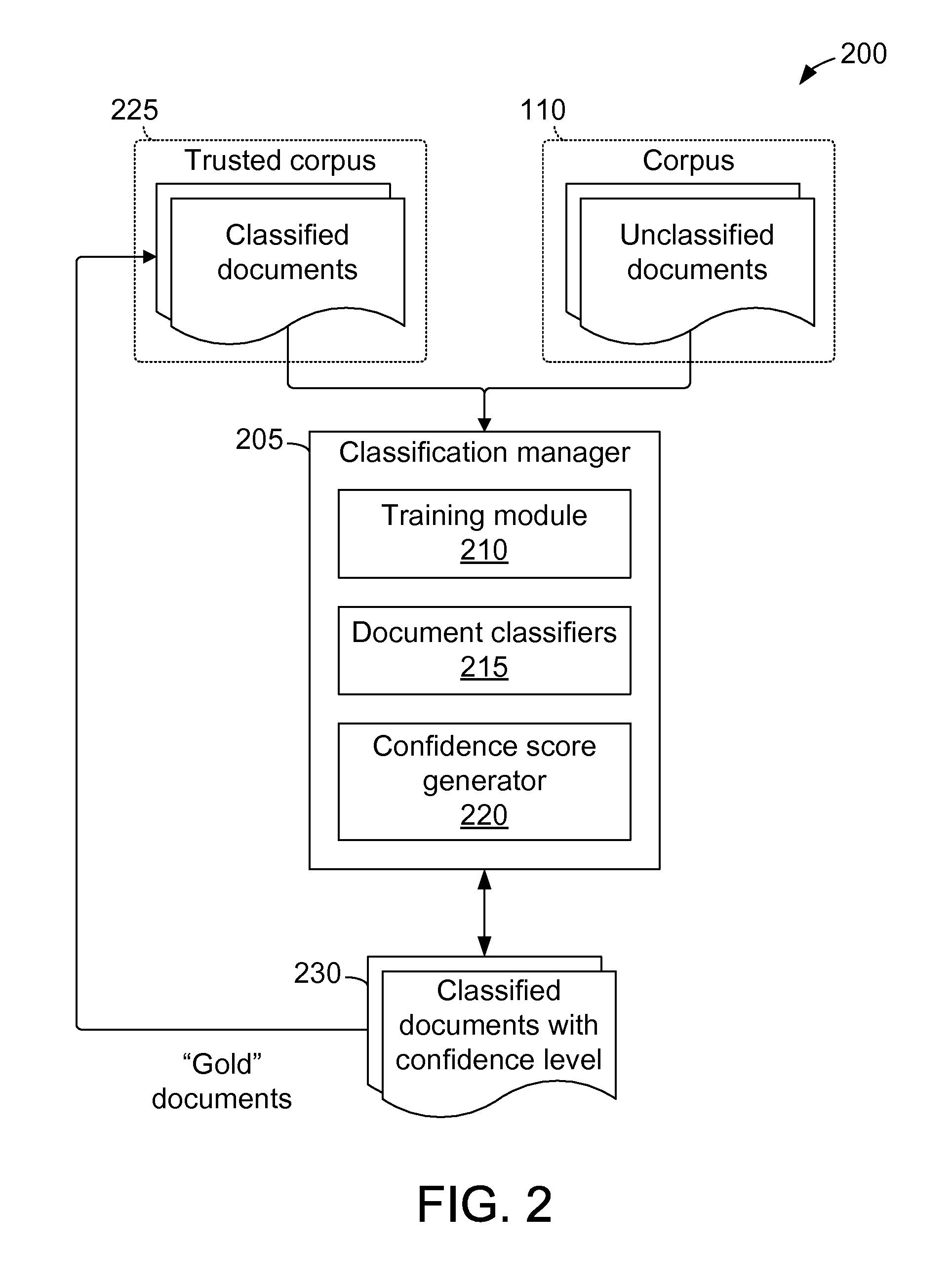Methods and systems for classifying data using a hierarchical taxonomy
a classification technique and hierarchical taxonomy technology, applied in the field of labeling data, can solve the problems that the static labeling scheme cannot adequately accommodate such changes, and the static labeling scheme has similar limitations when applied to these types of documents
- Summary
- Abstract
- Description
- Claims
- Application Information
AI Technical Summary
Benefits of technology
Problems solved by technology
Method used
Image
Examples
Embodiment Construction
[0015]Domain-specific taxonomy and related documents may be valuable resources for efforts such as customer support, providing standard domain knowledge classification and a hierarchical knowledge base. Described herein is a process of using such a taxonomy and the associated knowledge base to automate data classification, improve label quality and minimize manual review work. Such data may be the content of a plurality of documents. Accordingly, the terms “data classification” and “document classification” are used interchangeably herein. Specific examples related to classifying customer issues in the context of a support center are discussed below, but the methods described are applicable to the classification of any such documents.
[0016]A hierarchical taxonomy (e.g., a customer support taxonomy) is a hierarchical tree structure of domain specific issues, which starts with broad, generic topics (e.g., support issues), and drills down into more and more specific subcategories of ea...
PUM
 Login to View More
Login to View More Abstract
Description
Claims
Application Information
 Login to View More
Login to View More - R&D
- Intellectual Property
- Life Sciences
- Materials
- Tech Scout
- Unparalleled Data Quality
- Higher Quality Content
- 60% Fewer Hallucinations
Browse by: Latest US Patents, China's latest patents, Technical Efficacy Thesaurus, Application Domain, Technology Topic, Popular Technical Reports.
© 2025 PatSnap. All rights reserved.Legal|Privacy policy|Modern Slavery Act Transparency Statement|Sitemap|About US| Contact US: help@patsnap.com



